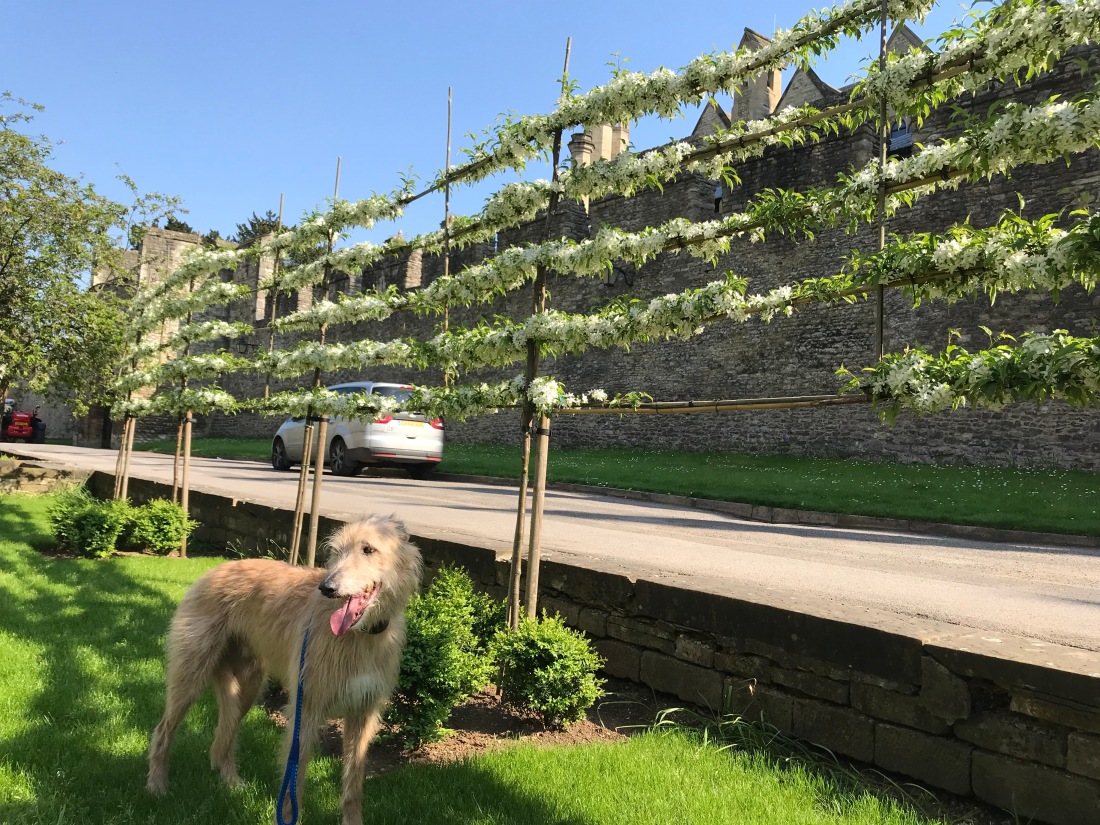Malus transitoria, the cut-leaf crabapple, is one of the tricksy members of the extended apple family. Like its sister, Malus triloba, its leaf looks more like a maple. Although the practice seems to be dying out, it used to be common for gardeners in the UK to be given a plant identification test when being interviewed for a job. This pair of crabapples were popular choices to winnow the wheat from the chaff; to test the depth of observation and knowledge. A malicious choice perhaps, designed to expose ignorance as much as strength. In common with maples, it has excellent autumn colour, and the leaves turn a very pleasing golden yellow. The picture below shows the trees in full blossom, blossom so dense that the branches are bars of white and most of the leaves are obscured. If fertilised, these flowers set into small golden fruits less than 10mm or 3/8″ across. Insignificant in size, but profuse and excellent in their abundance.
There is no etymological connection between Malus and malleability of which I am aware, but the crabapple, in common with many other members of ROSEACEAE can be formed or deformed with pressures, subtle of not. Although the Potager du Roi at Versailles has a derelict air, it still contains some magnificent examples of just how malleable apples and pears can be, and it is worth visiting just to see these. Those pictured below in New College, Oxford, have lateral branches which have been trained out perpendicular to the trunk to a length of 2m/6′ each side and pruned so that the tree grows in a flattened plane. It raises an interesting question, I think. The tree, left alone, will find a shape determined by its nature and in response to its environment which, in the case of Malus transitoria is a fairly upright tree which all the same becomes as broad as it is tall with a range of 4-8m/14-26′. But, in the hands of a gardener, it can be shaped, and this adaptability is there in its nature also. Both possibilities are true to the nature of the tree, so long as we are considered part of the environment. The transitoria is a reference to the short-lived nature of the species, but it is a tree, and these things are relative.
The espaliered tree is highly useful when designing gardens. It provides a ‘light’ and visually permeable screen, whilst also providing a sense of enclosure. In some ways it is living equivalent of the tracery in a cloister’s arch (www.philosophergardener.com/snow), but the conceptual antithesis of the bars on a prison cell’s window. As below, it can be used to define an area – in this case a lawn – whilst not excluding a view of something desirable. The medieval city wall of Oxford can be seen through the branches. My hound and gravatar Floyd is indifferent to its virtues, but then, like all dogs, he is a cynic.

